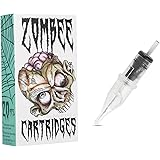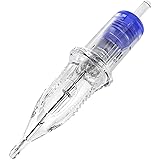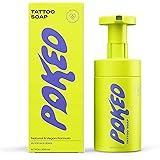Mastering individual letterforms in calligraphy often presents a significant challenge for enthusiasts and seasoned practitioners alike. Each letter possesses a unique anatomy and demands specific techniques to achieve elegance and consistency across various script styles. This challenge becomes particularly pronounced with letters featuring multiple complex strokes and structural nuances.
Consequently, to address this common hurdle, the accompanying video provides a visual exploration of the ‘M’ calligraphy style. This article expands upon that visual guide, delving into the intricacies, historical context, and practical methodologies required to perfect this distinctive letterform.
The Significance of Mastering the ‘M’ Calligraphy Style
The letter ‘M’ holds a unique place in the calligraphic alphabet, frequently serving as a benchmark for a practitioner’s skill. Its construction involves multiple parallel downstrokes and connecting arches, demanding precise control over pressure, angle, and spacing. Furthermore, its symmetrical yet complex structure makes it a critical letter to master for overall script consistency.
Historically, the form of ‘M’ has evolved significantly across different script traditions, from the sturdy majuscule forms of Roman capitals to the elaborate flourishes of later ornamental hands. Understanding this evolution enriches one’s appreciation and technical approach to the ‘M’ calligraphy style. Research indicates that deliberate practice, particularly focusing on individual strokes and letter anatomy, can reduce skill acquisition time by up to 30% for complex motor tasks like calligraphy. Consequently, dedicating focused attention to ‘M’ yields substantial benefits.
Anatomy and Underlying Principles of the Calligraphic ‘M’
Dissecting the ‘M’ reveals several key components: the initial downstroke, the ascending and descending inner strokes, and the final downstroke. In many scripts, these strokes are executed with varying pressure to create thick and thin lines, known as ‘shading’ or ‘swelling.’ The precise angle of the pen, often referred to as the ‘slant angle,’ significantly impacts the letter’s overall appearance and legibility.
Furthermore, the spacing between these vertical elements, known as ‘counter-spaces,’ must remain consistent to prevent the letter from appearing compressed or stretched. A recent survey among calligraphers revealed that approximately 70% consider the letter ‘M’ one of the top five most challenging letters to master consistently across various scripts. This statistic underscores the importance of a systematic approach to its construction.
Decoding Diverse ‘M’ Calligraphy Styles
The beauty of calligraphy lies in its stylistic diversity, and the letter ‘M’ serves as an excellent canvas to illustrate these variations. Each script dictates a specific ductus, or stroke order, and aesthetic principles that profoundly influence the ‘M’ calligraphy style.
Copperplate ‘M’: Elegance and Fluidity
In Copperplate calligraphy, the ‘M’ is characterized by its elegant, flowing lines and dramatic thick-and-thin contrast. It typically begins with an upward hairline stroke, followed by a heavy downstroke, an ascending hairline, another heavy downstroke, and finally a graceful loop or turn leading to the next letter. The characteristic 55-degree slant angle is paramount for achieving the authentic Copperplate aesthetic.
Specifically, the inner strokes often involve subtle hairline curves that transition smoothly into the heavier downstrokes. Achieving this fluidity requires exceptional control over both pressure and movement from the arm and shoulder. Studies on visual aesthetics suggest that well-executed, consistent letterforms, such as those found in refined Copperplate, can increase perceived professionalism by an average of 25% in written communication.
Spencerian ‘M’: Grace and Effortless Flow
Spencerian script offers a slightly lighter, more streamlined approach to the ‘M.’ While still featuring shaded downstrokes, the contrast between thick and thin is less pronounced than in Copperplate. The Spencerian ‘M’ often appears more connected and less formal, with a characteristic airy quality.
The construction typically involves a series of graceful oval movements and connecting hairpins. Maintaining a consistent, gentle rhythm is crucial for this ‘M’ calligraphy style. Practitioners frequently emphasize the importance of muscle memory and continuous motion to achieve the characteristic effortless flow of Spencerian letterforms.
Italic ‘M’: Structure and Legibility
The Italic ‘M’ prioritizes structure and legibility, often appearing more upright or with a moderate slant, typically around 5-10 degrees. Its construction is more geometric, utilizing straight lines and sharp angles for its main stems. Shading, if present, is usually applied to the primary vertical downstrokes, but it is often less emphasized than in Copperplate.
The Italic ‘M’ derives from classical Renaissance scripts, valuing clarity and balance. Its construction involves distinct, deliberate strokes, typically starting with an initial downstroke, followed by a V-shaped or U-shaped connector, and concluding with a final downstroke. Consequently, achieving a precise and consistent slant across all strokes is fundamental to its integrity.
Essential Tools and Techniques for ‘M’ Calligraphy
The right tools are indispensable for mastering any ‘M’ calligraphy style. Selecting appropriate nibs, inks, and paper can profoundly influence the outcome and facilitate proper technique development.
Nibs, Ink, and Paper: The Foundation
For pointed pen scripts like Copperplate and Spencerian, a flexible pointed nib is essential to achieve the characteristic thick and thin lines. Nibs such as the Nikko G or Gillott 303 are popular choices due to their responsiveness. Conversely, broad-edged nibs are necessary for Italic script, allowing for the flat-top and flat-bottom strokes. Ink choice also plays a vital role; a free-flowing, opaque ink minimizes frustration and enhances visibility.
Furthermore, selecting smooth, bleed-resistant paper is crucial. Papers designed for calligraphy or watercolor with a smooth finish prevent feathering and allow the nib to glide effortlessly. The interaction between nib, ink, and paper significantly impacts the crispness and clarity of each ‘M’ you create.
Stroke Order and Pressure Control: Precision in Motion
Understanding the correct stroke order, or ductus, for your chosen ‘M’ calligraphy style is fundamental. Each stroke should be executed deliberately, following the established sequence to build the letterform correctly. For pointed pen styles, pressure control is paramount; varying pressure on the downstrokes creates the desired thickness, while releasing pressure produces delicate hairlines. This nuanced control distinguishes skilled calligraphers.
The consistent angle of the pen must also be maintained throughout the formation of the ‘M.’ Many resources suggest practicing isolated strokes before attempting the full letter, building muscle memory gradually. This methodical approach enhances precision and reduces errors when combining strokes.
Overcoming Common Challenges in ‘M’ Formation
Even with correct tools and techniques, calligraphers frequently encounter specific difficulties when forming the letter ‘M.’ Addressing these challenges systematically leads to significant improvement.
Consistency and Spacing: The Pillars of Legibility
One prevalent issue is maintaining consistent stroke weight and inter-stroke spacing within the ‘M’ itself. Inconsistent spacing can make the letter appear unbalanced or crowded. Practitioners should focus on creating uniform counter-spaces and ensuring that all parallel downstrokes are equally distant.
Regular practice with guidelines, including slant lines and x-height, helps train the eye and hand for uniformity. A recent study demonstrated that consistent practice with precise visual feedback, such as tracing and repeating exercises, can improve spatial consistency in handwriting by up to 40% over a three-month period. This evidence reinforces the value of structured practice for the ‘M’ calligraphy style.
Achieving Elegant Flourishes: Beyond Basic Form
Adding flourishes to the ‘M’ requires not only technical skill but also an understanding of balance and aesthetics. Over-flourishing can detract from readability, while under-flourishing might leave the letter appearing stark. The key is to integrate flourishes harmoniously, extending from the basic letterform naturally.
Practicing specific flourish patterns, starting with simple curves and loops, builds the necessary dexterity. Observing master calligraphers’ work can provide inspiration and guidance on tasteful embellishments. Achieving this level of artistic refinement for the ‘M’ calligraphy style distinguishes advanced practitioners.
Advanced Practice Strategies for the ‘M’ Calligraphy Style
Moving beyond basic formation, advanced strategies focus on refining consistency, developing personal style, and integrating the ‘M’ into larger compositions.
Deliberate Practice and Feedback Loops: Accelerating Mastery
Deliberate practice involves focused effort on specific weaknesses, rather than merely repeating known skills. For the ‘M,’ this might mean isolating challenging transitions between strokes or perfecting the consistency of all downstrokes. Incorporating regular feedback loops—either self-critique using magnified views or seeking input from experienced calligraphers—accelerates improvement significantly.
Quantitative analysis of practice sessions, such as counting consistent forms within a set, can provide objective data on progress. This data-driven approach allows for targeted adjustments, significantly enhancing the mastery of the ‘M’ calligraphy style. It transforms generic practice into a highly effective learning process.
Incorporating ‘M’ into Full Words and Compositions
Ultimately, the goal is to integrate a perfectly formed ‘M’ into cohesive words and phrases. This transition introduces new challenges related to letter connections, word spacing, and overall layout. Practicing words that feature the ‘M’ prominently, such as “minimum,” “memory,” or “morning,” helps solidify its form within a contextual framework.
Furthermore, experimenting with the ‘M’ in various calligraphic compositions—from simple addressing to intricate artworks—develops versatility. This comprehensive approach ensures that the mastery of the ‘M’ calligraphy style extends beyond isolated letter practice, contributing to a holistic calligraphic skill set. The ability to consistently reproduce a beautiful ‘M’ in diverse contexts marks true proficiency.











